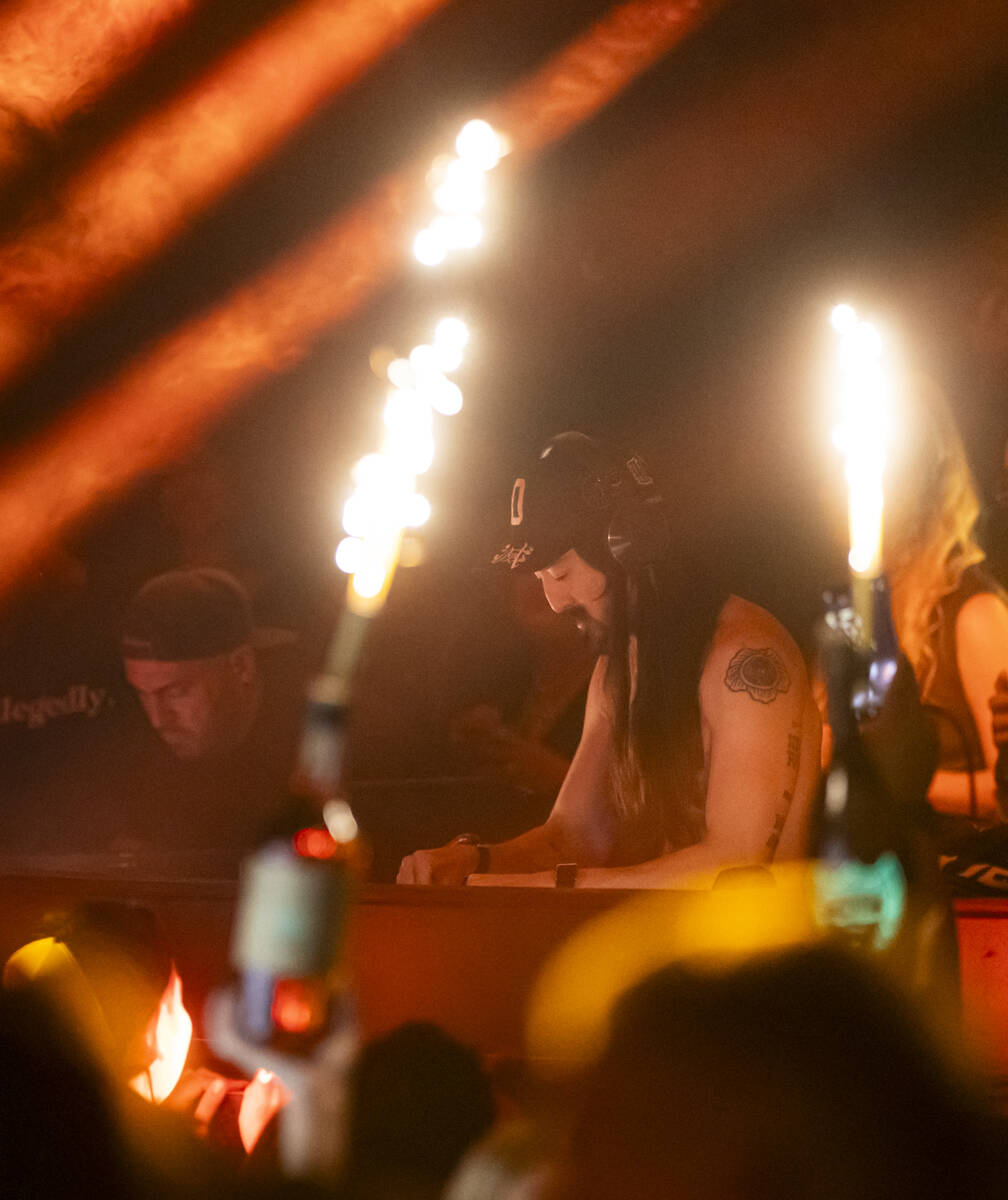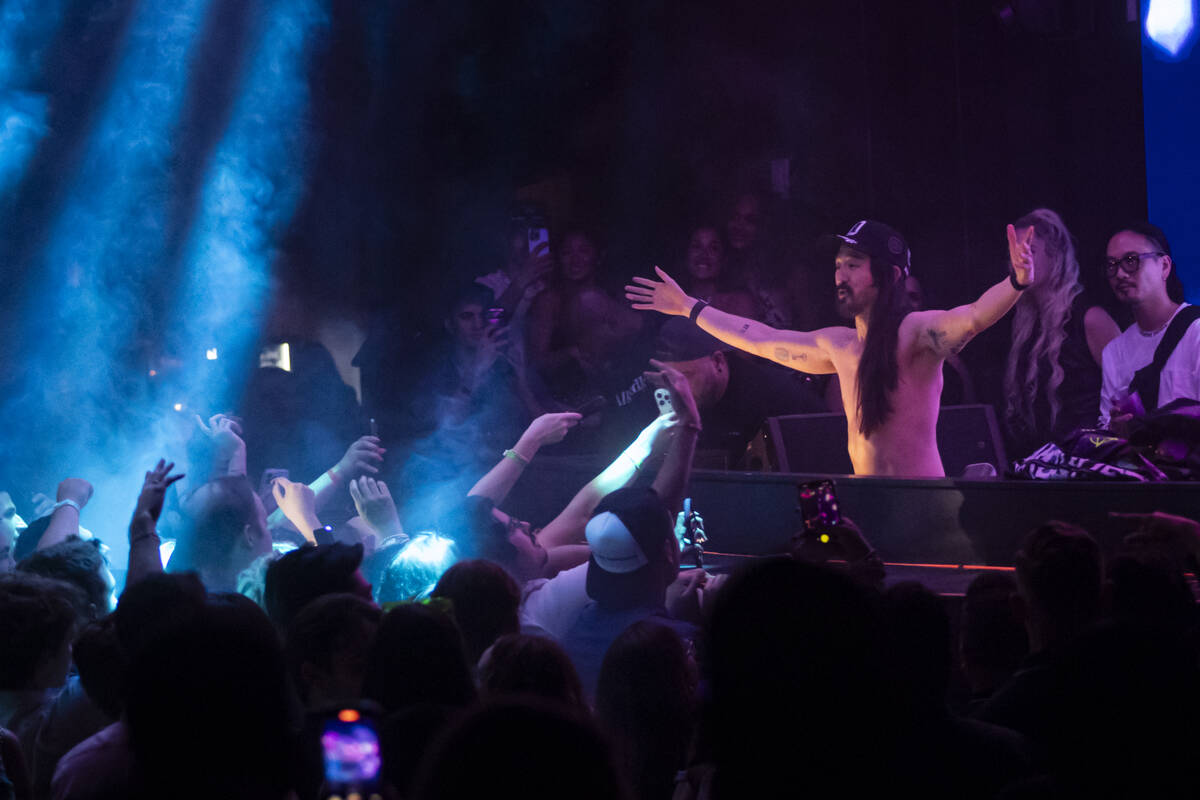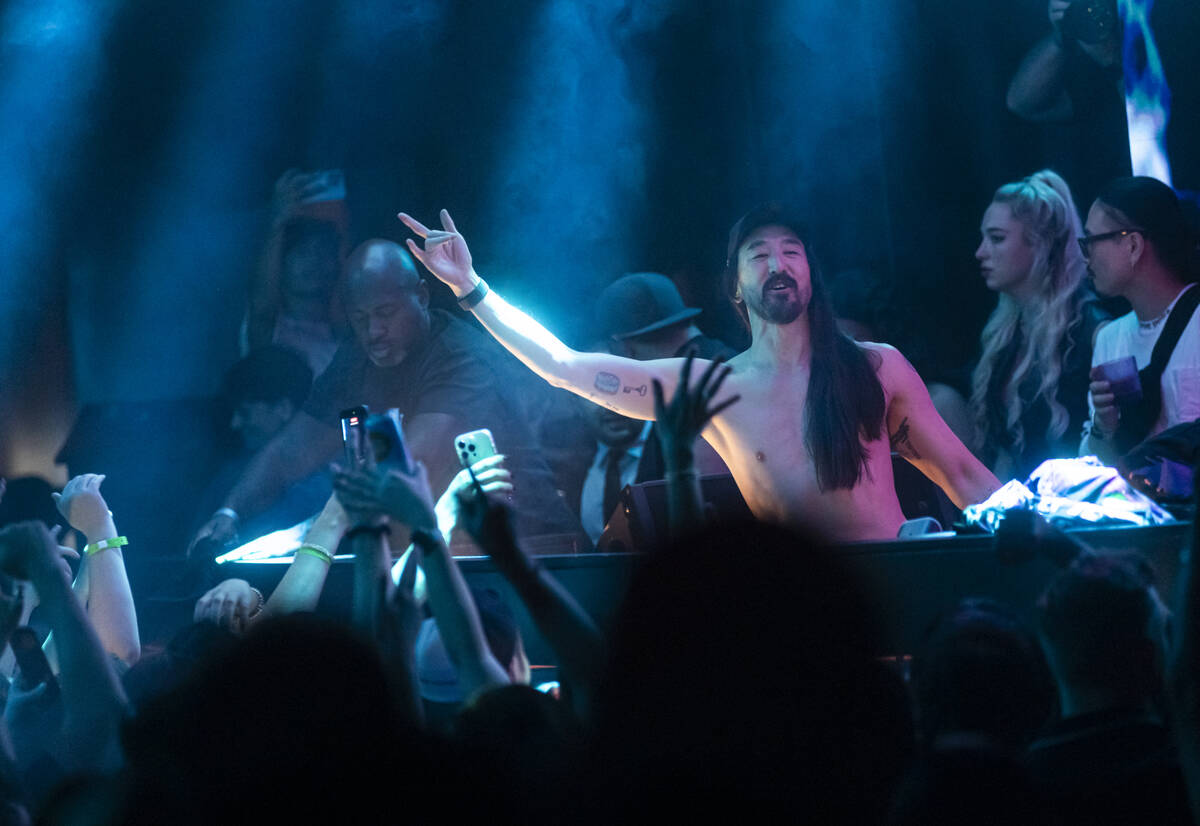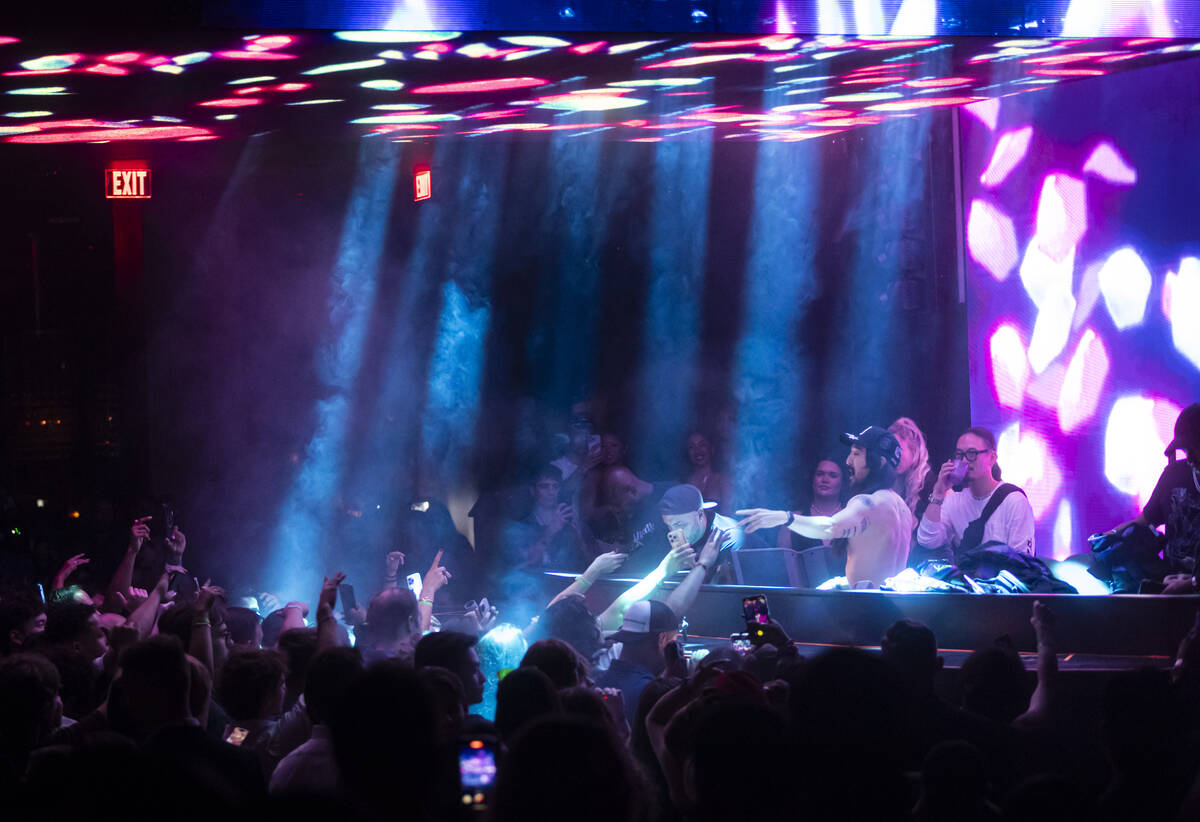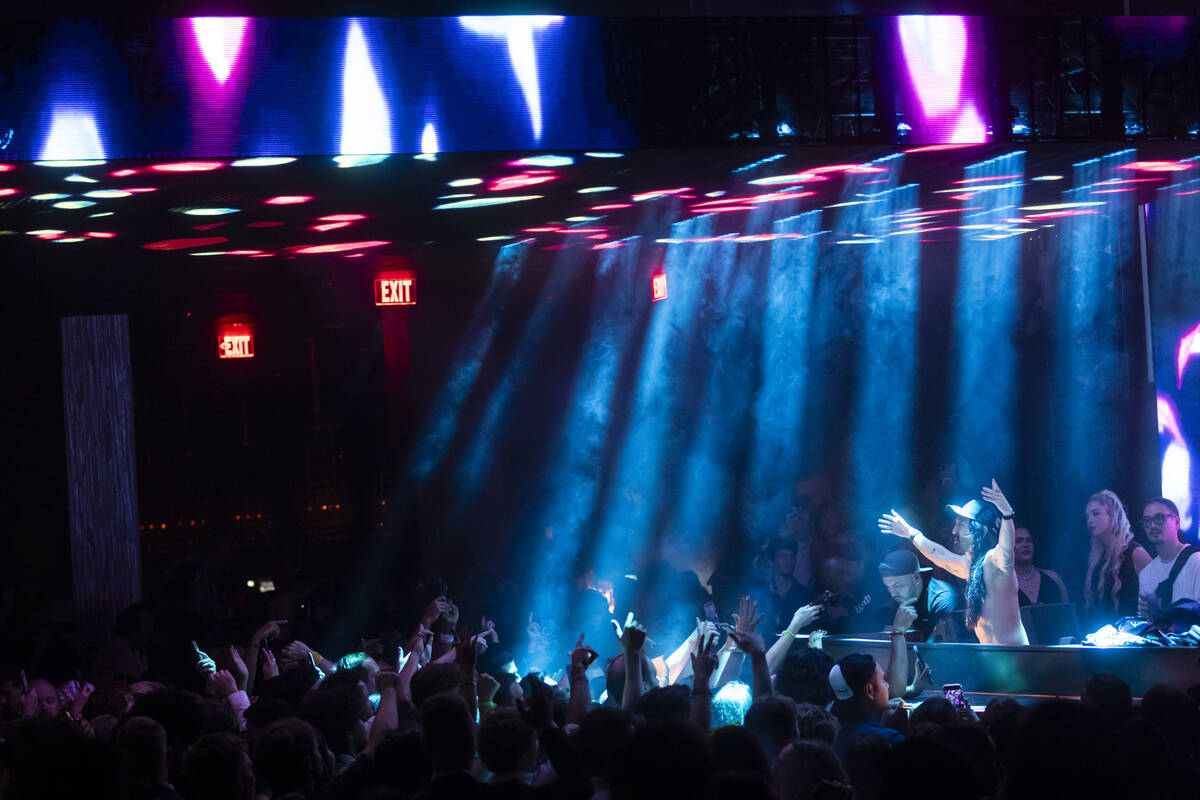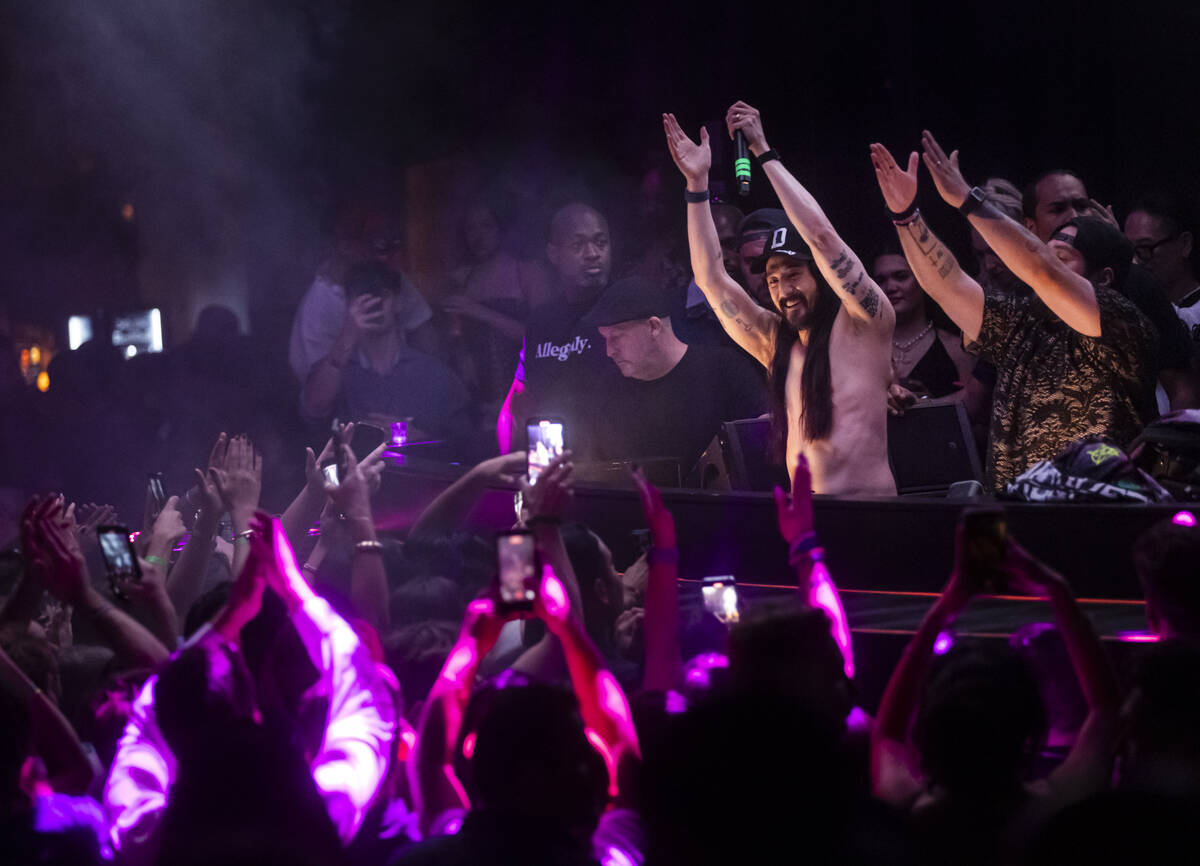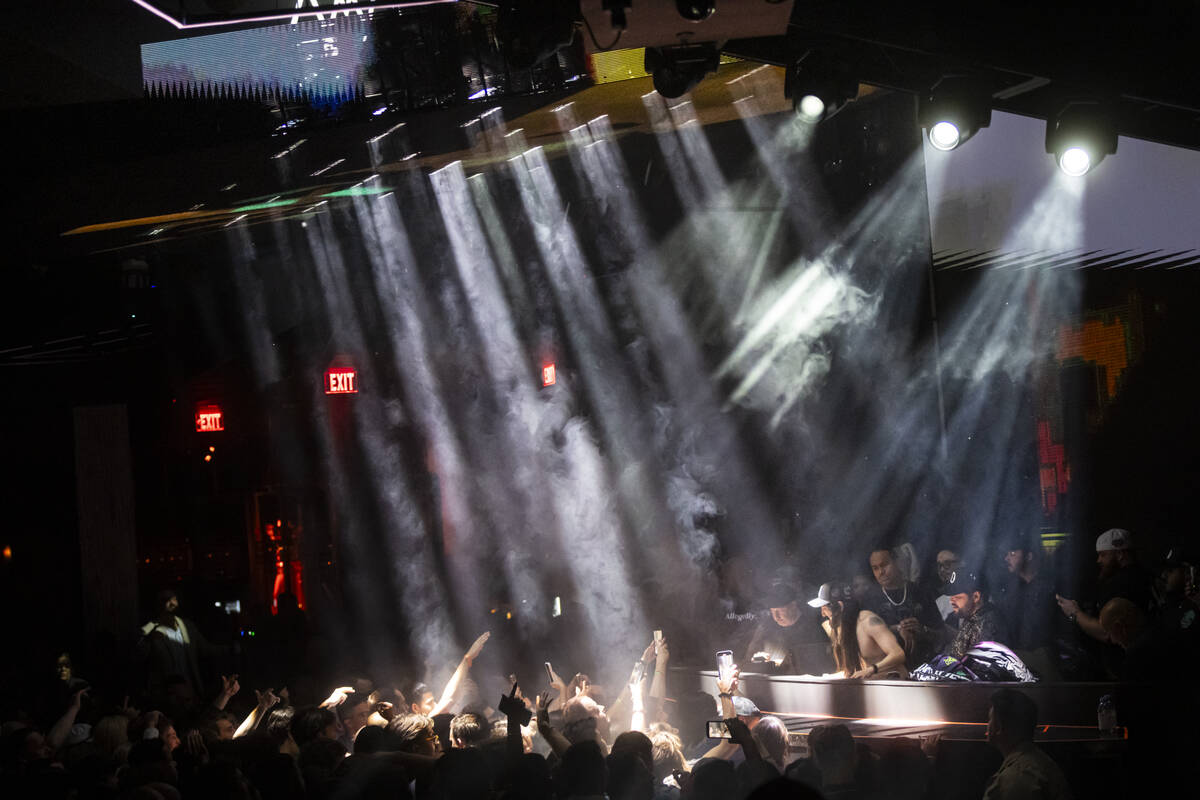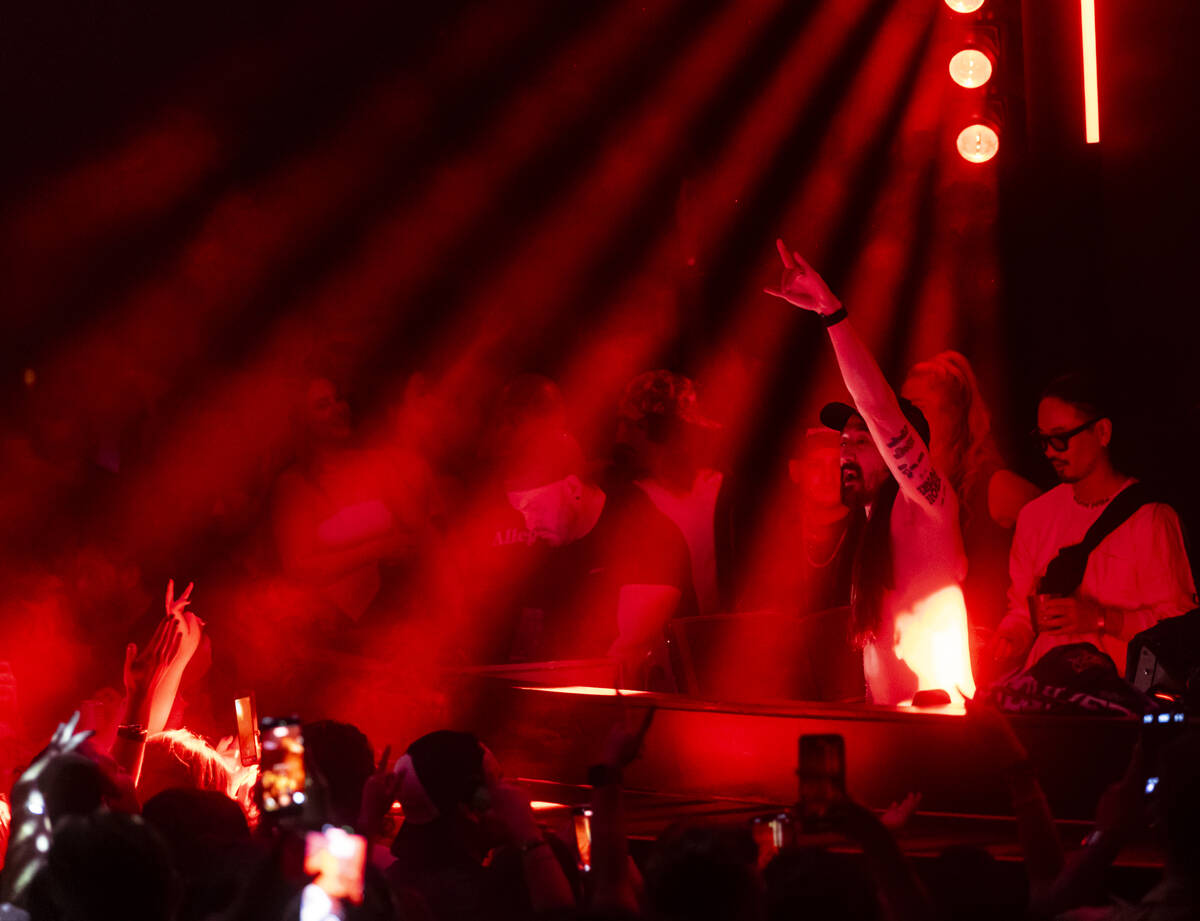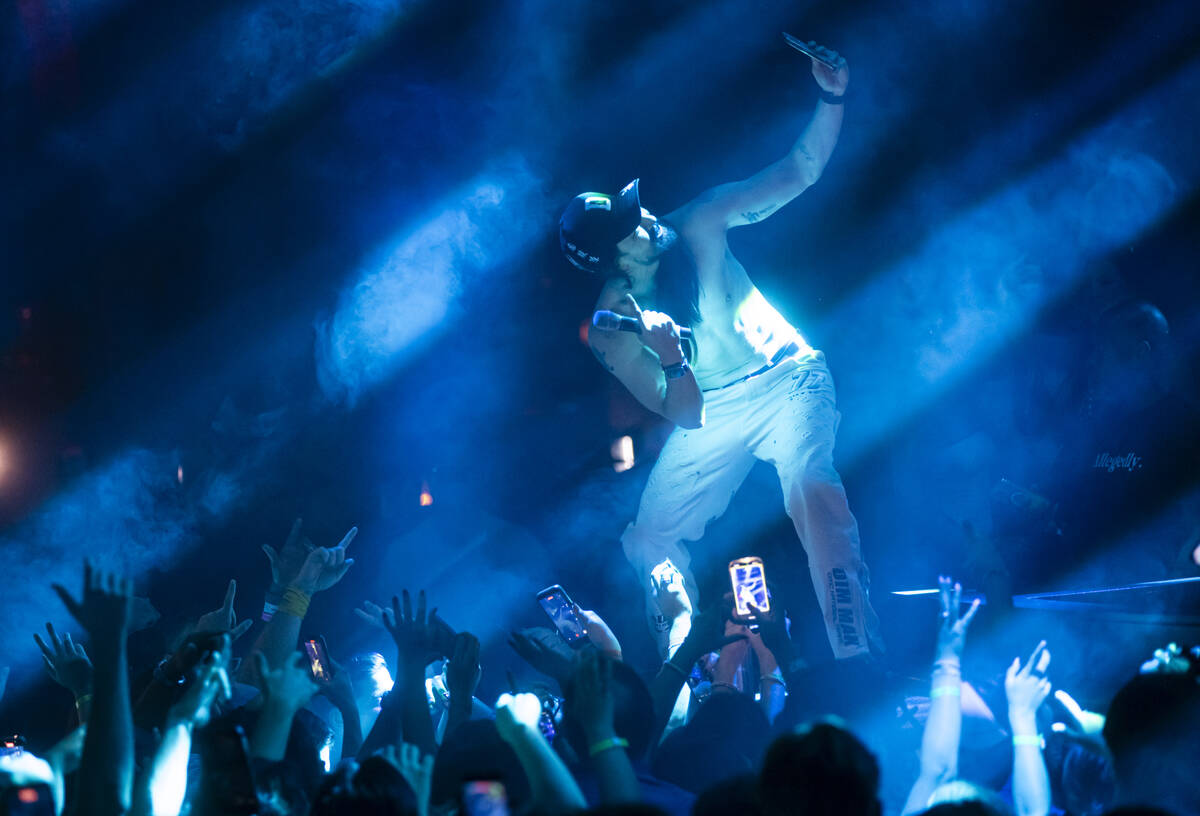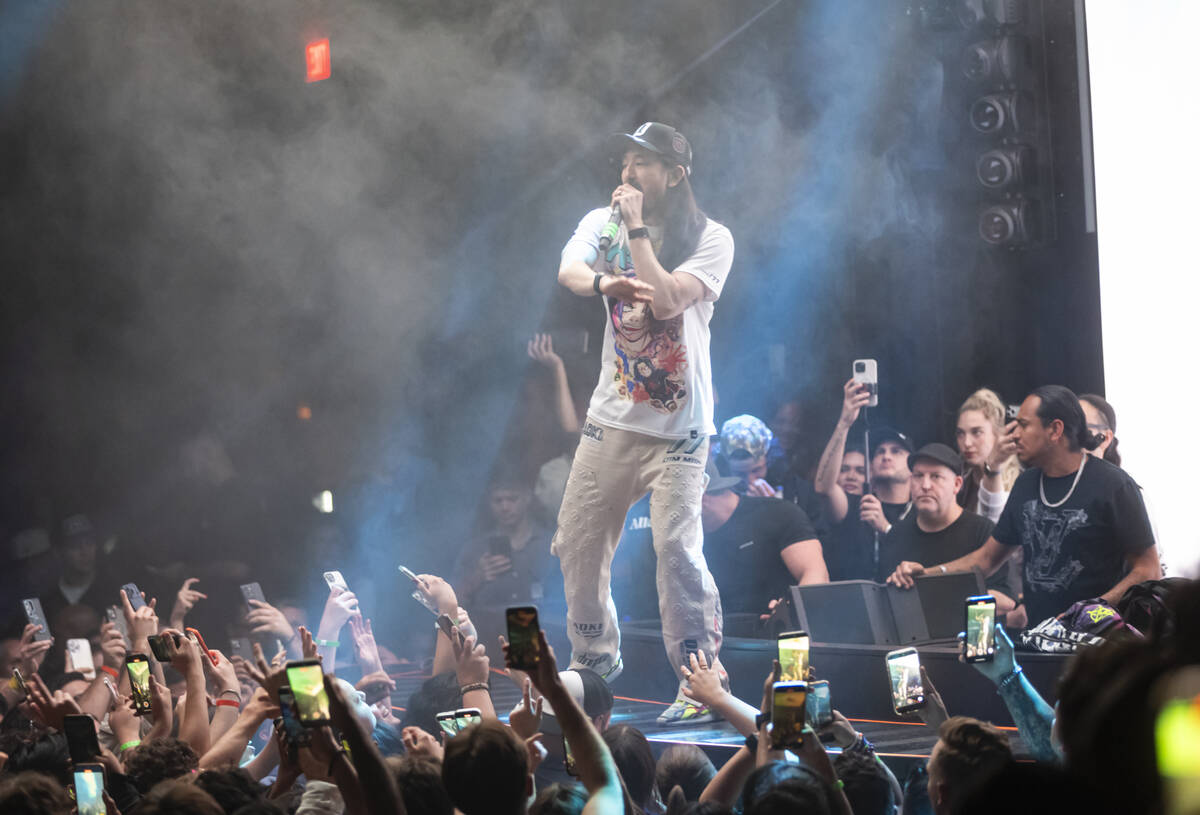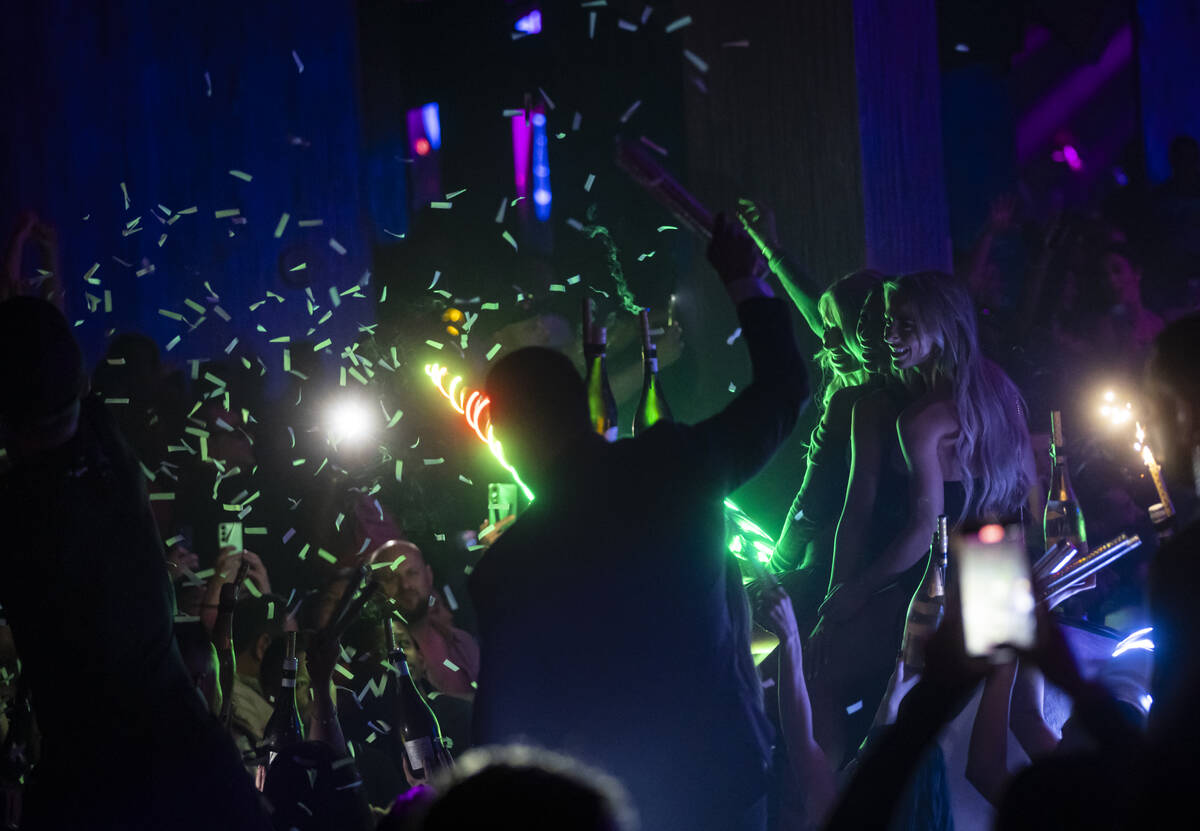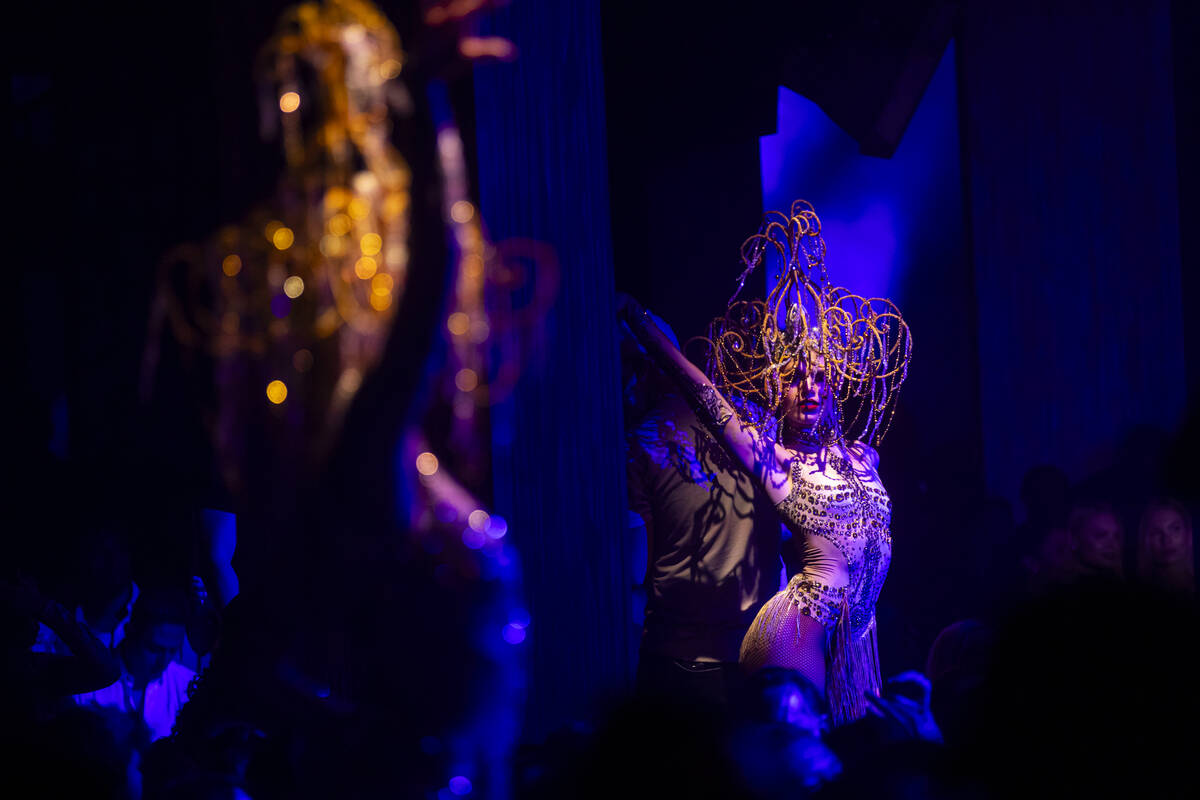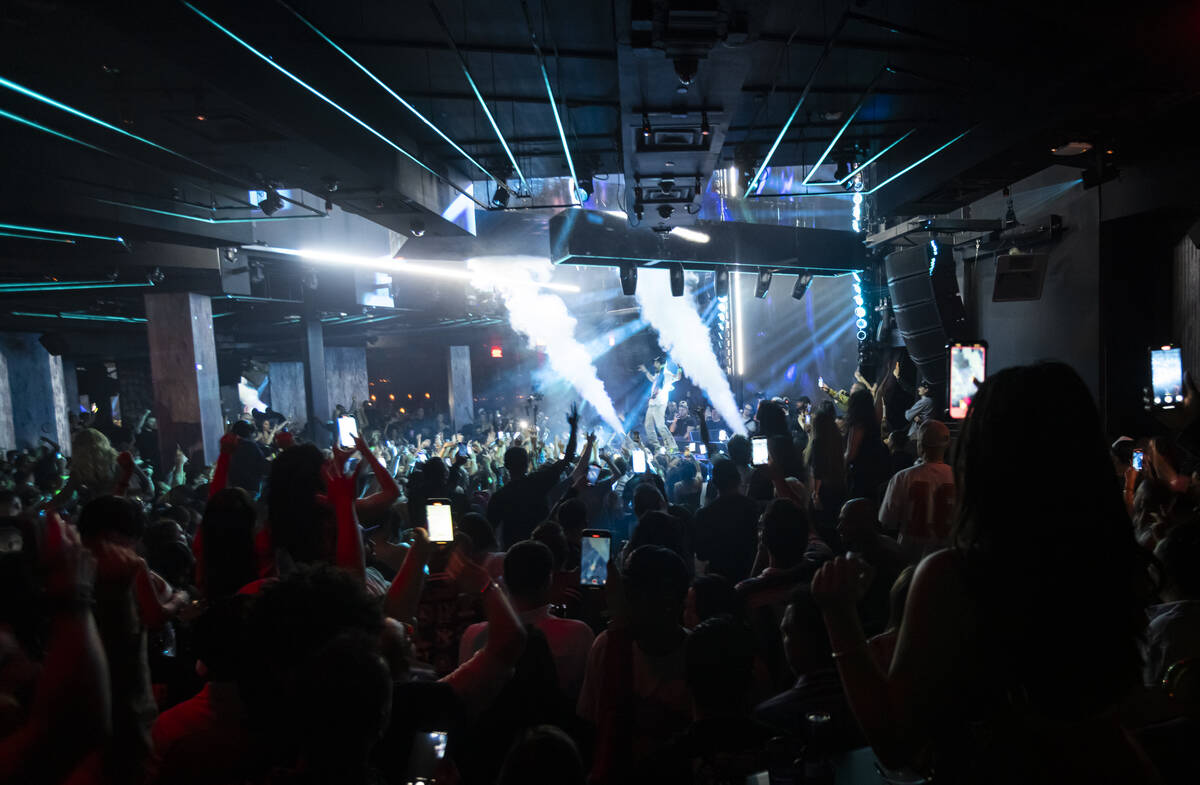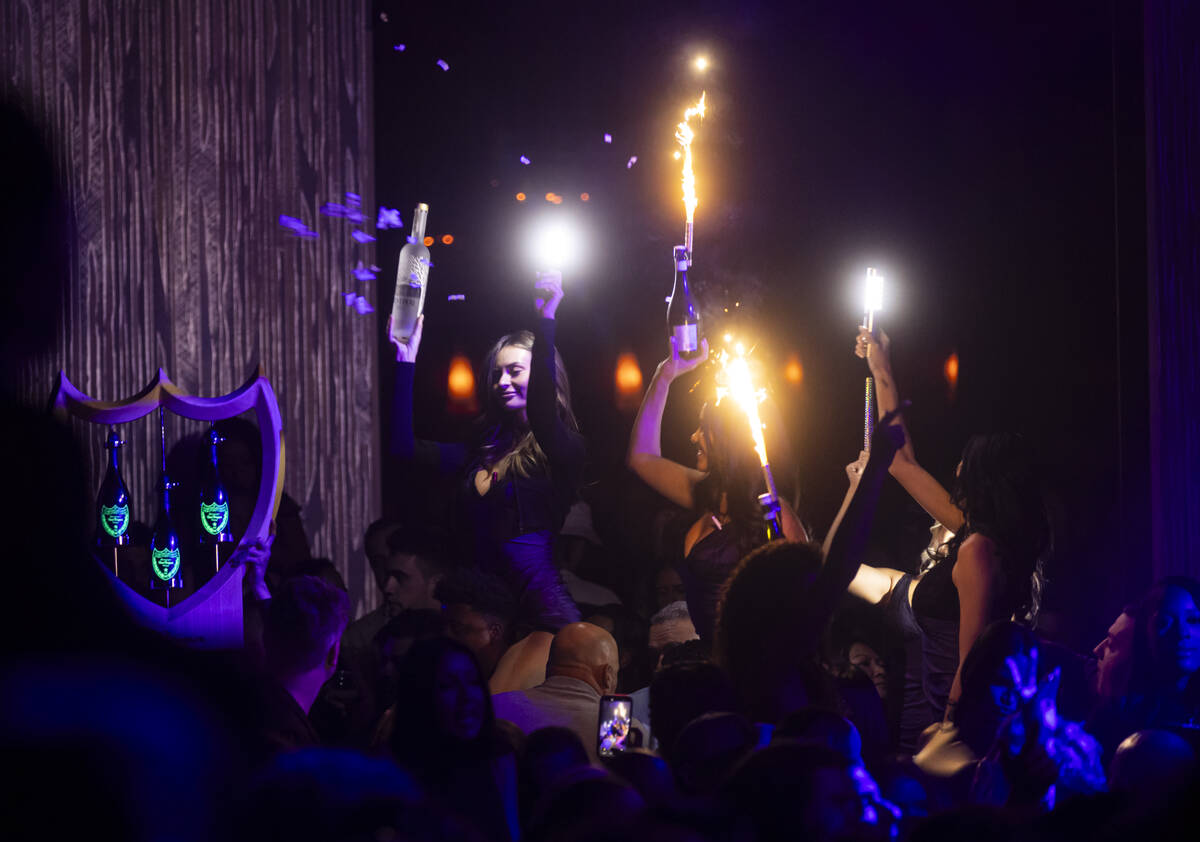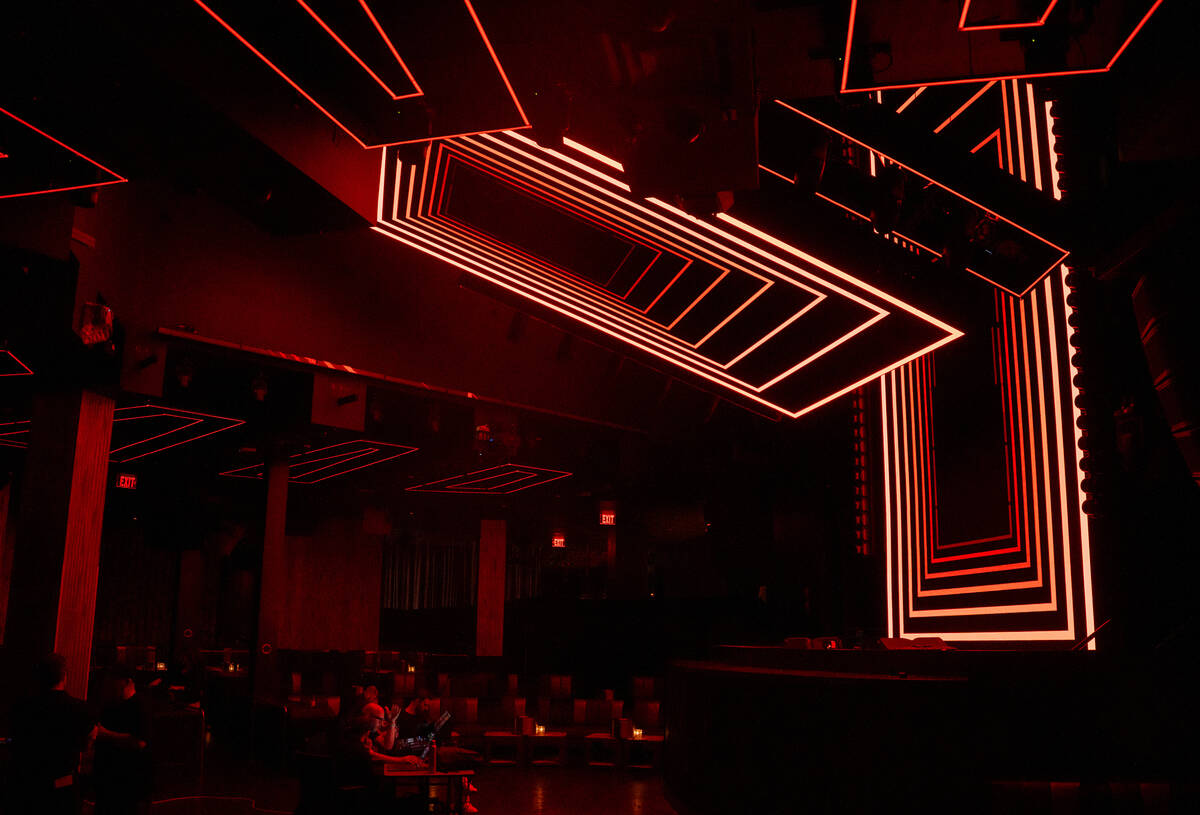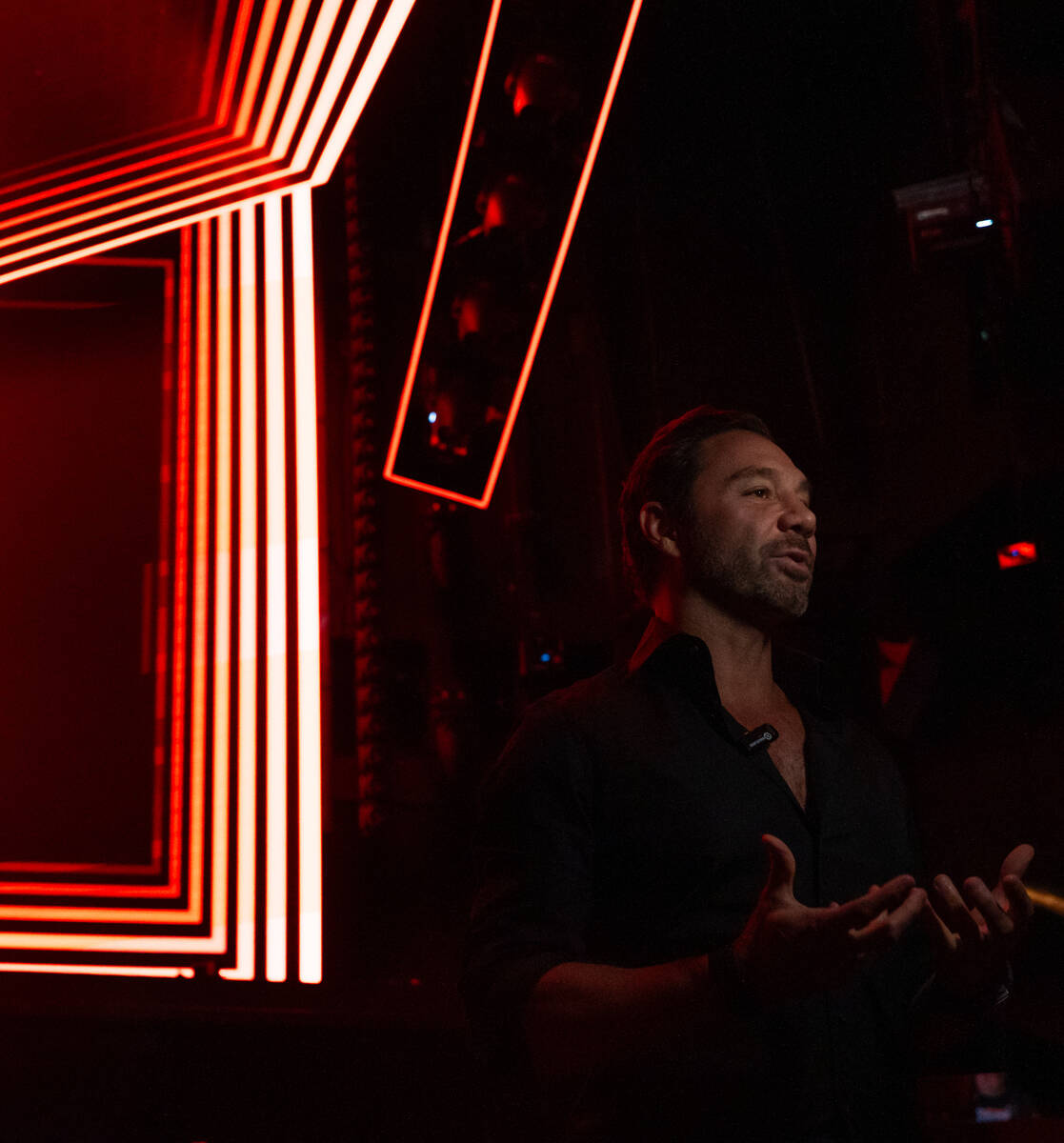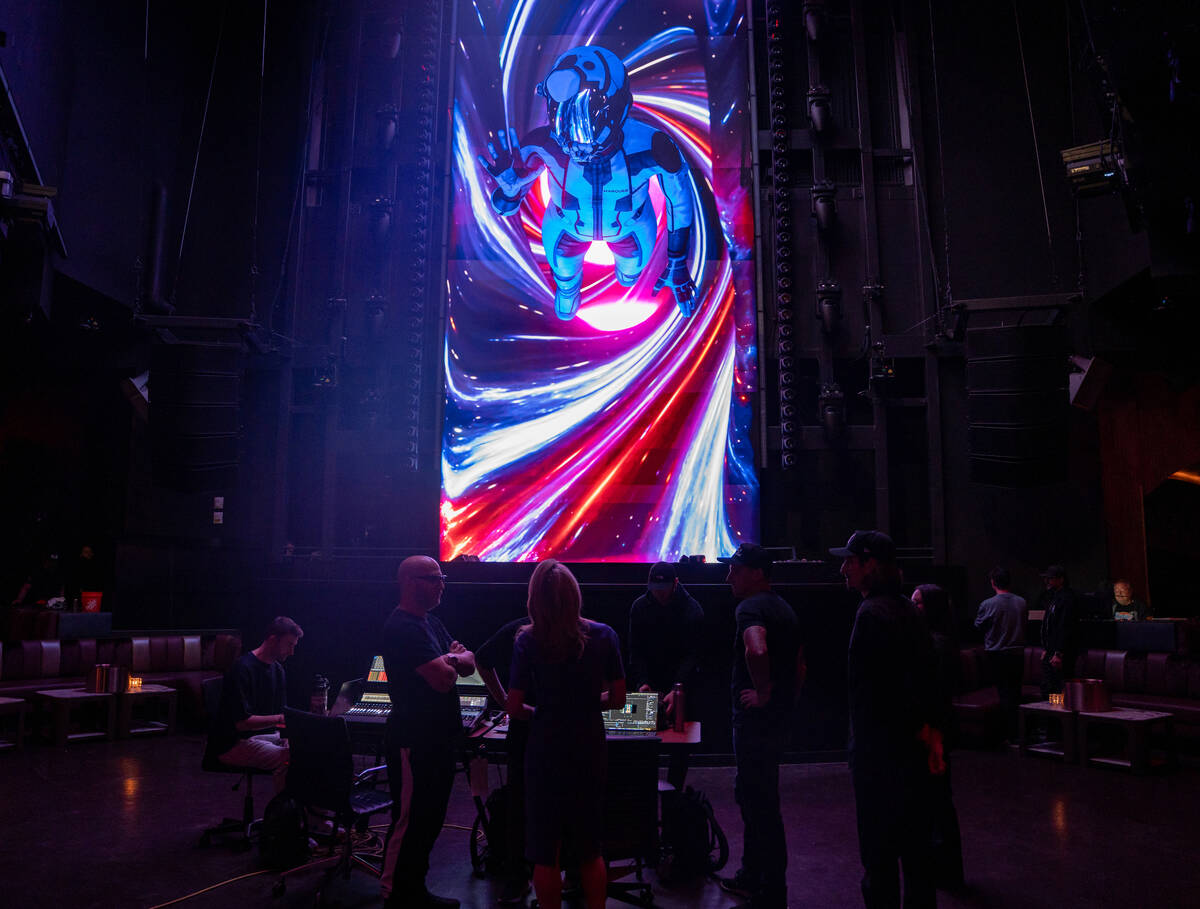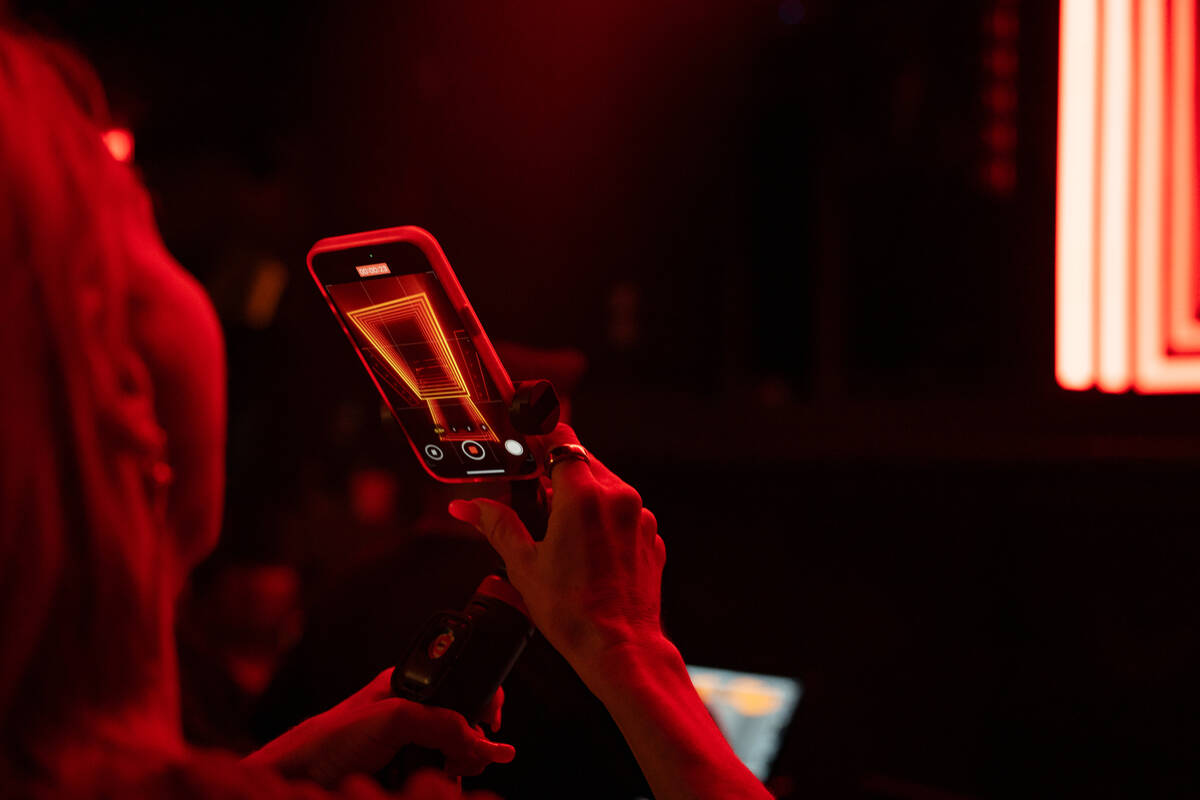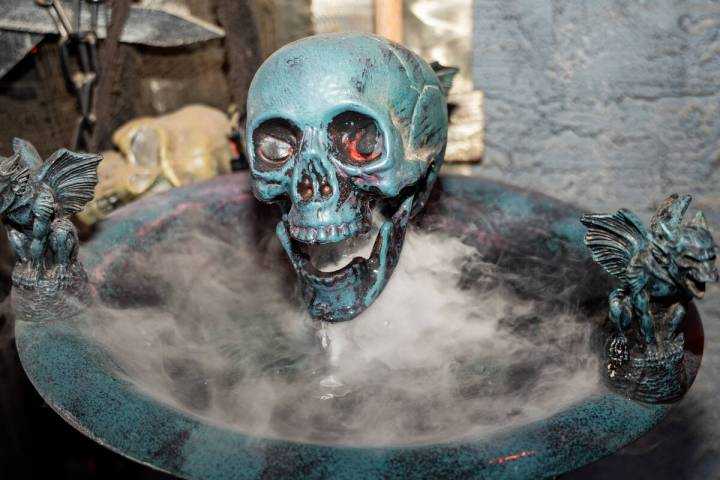Long-running Vegas nightspot gets first major makeover in 15 years
It takes all of 10 minutes for Steve Aoki to doff his top.
It’s been that kind of night — or morning, rather.
The long-haired, superstar DJ-producer is standing on the lip of a newly lowered DJ booth, bare-chested, gesticulating like a traffic cop directing a gridlock of flesh at 1:20 a.m. on a Tuesday.
The crowd before him, beside him, engulfing him on all sides is frothing — it’s hard to tell if it’s the bass or all the bodies trampolining on the furniture, the dance floor, wherever there’s space, that’s making the club throb beneath our feet, tingling the toes.
A trio of blondes clambers atop the back of a large, life-sized unicorn — with neon horn and mane, naturally — that’s slowly being guided through the back of the circular space as if to make you further question your already overtaxed senses.
On a massive 30-foot video screen behind Aoki, images of deep-space pulsate one minute, luminous lava lamp patterns the next, flanked by two more screens above it that rotate in sync with the music; intermittent laser blasts add still more light and color to this audiovisual frenzy.
Aoki grabs cellphones from some of the fans around him and snaps selfies, because this feels like a night to remember: Marquee Mondays are back, one of the city’s busiest, most renowned industry nights returning to cap Marquee Las Vegas’ “grand reveal weekend,” when a yearlong reimagination of the popular nightspot was unveiled to the public.
It’s been a long time coming: This was the club’s first substantial set of enhancements since it opened with The Cosmopolitan in December 2010.
“The concept was really just to modernize and bring up to date an amazing club that’s already doing really well, bringing in the latest technologies after 15 years. The experience was dated, frankly,” says Jason Strauss, co-CEO of Tao Group Hospitality, which owns and operates Marquee Las Vegas and dozens of other properties around the world. “It’s really a commitment to upgrading the look, the feel, and then the technology that comes in the form of sound, lights, kinetics, LEDs.”
“We’re being aggressive,” he adds. “We’re doubling down on a huge investment here.”
Intimate setting, grand production
They call it “The Monolith.”
The day before Marquee Las Vegas reopens fully, Strauss stands in the middle of the main room’s dance floor, a gargantuan three-story video screen with 8K resolution hovering above him.
“This thing is just going to be powerful,” he says. “For a room this intimate to have this type of horsepower between light, sound and this video screen, it’s like nothing else in the world.”
Nearby bustles Simon Evans, senior director of creative audiovisuals at Tao Group Hospitality, who’s toured with and designed stage shows for such big names as the Black Eyed Peas and Kygo, and who helped conceptualize Marquee’s high-tech upgrades.
“We’re using a lot of new technologies to bring the visual content to life on the screen,” Evans explains. “We’re going to take people on a journey through the visuals, which we call ‘portals.’ A portal is going to open, and you go into different dimensions.
“It’s very kind of different and immersive in the way we present it,” he continues. “And then we’re going to do laser etching, which is basically where the lasers interact with the LED visuals. It’s almost like you’ve gone from a 3D show to almost a 4D show. That’s something that is very unique in nightlife.”
The sound system has also been overhauled to balance power with nuance.
“This is the kind of system which you find in very, very large spaces, big festival productions,” Evans says. “The beauty of bringing it into a room like this is that we can really direct the (speaker) arrays to make sure that every area is just feeling really nice, as opposed to a big room where it’s just blasting.
“We always like to go bigger,” he continues, “because then it’s easy to tweak and tone down in the right areas, versus driving a system and blasting everyone’s ears out with that.”
The DJ booth has also been lowered to create a more immersive, in-your-face, festival-type experience and outfitted with custom-made subwoofers that enable it to be closer to the floor while still bringing the bass.
“I call it ‘the throb,’” Evans says. “You want to feel the throb of the room.
“With the lasers, the video and then the lighting, once they all come together, it’s going to be a sensory overload,” he continues. “It’s going to be a show from the moment you come in. It’s like an intimate setting where you’ve got this grand production.”
Evolve or die
The desert that surrounds Las Vegas used to extend to its dance floors.
Though the city has become synonymous with nightlife, the Strip was devoid of the kind of high-end clubs that drew top DJ talent through the most of the 2000s.
Marquee — along with XS at Wynn Las Vegas, which recently closed for a year for renovations of its own — played a pivotal role in turning Vegas into one of the world’s club capitals.
“It really was the start of this whole EDM movement, and it caused our competitors to start building DJ booths on the dance floor for the first time and investing in big talent,” Strauss says. “This nightclub really was the impetus for what nightlife is now, which is giant, you know?”
It was also a catalyst for the ongoing nightclub arms race.
“What’s really interesting about Vegas is that all the venues are all on one street,” Strauss says. “If one of us does something new or someone innovates, we better innovate fast and change, or we’re dead, right? We’re so integrated that if we don’t change, we die.”
Strauss notes that he’d been pushing for this change — in the form of big-dollar club improvements — for a while.
“We’ve been begging to do a renovation for seven years; we just didn’t have the right partner in the property,” he notes. “There was never a commitment to reinvest into Marquee. It was doing very well, it was very profitable, and nobody wanted to invest.”
When MGM Resorts International acquired The Cosmopolitan in 2022, Strauss got the partner he was looking for.
“We obviously have an amazing relationship with MGM,” he says of the Tao Group. “We have Palm Tree (Beach Club) with them, Hakkasan, multiple other properties. They know what we’re capable of; we know what they’re capable of. It was a perfect marriage to finally say, ‘Let’s get after it.’”
And it’s not just the nightclub that’s getting a facelift: Work will soon begin on renovating Marquee Day Club as well.
“The day club will have a whole new look and feel for the summer,” Strauss says. “New technology, new LED, a DJ booth that’s going to be way more inclusive of the crowd instead of being a performance stage. It’s a holistic renovation that’s really going to reinvent the entire Marquee venue at The Cosmo.”
Bridging the generation gap
Do millennials and Gen Z still want to party and go clubbing?
There’s data to suggest a generational drop-off in both.
According to an August Gallup poll, there was a 9 percent reduction over the past two years in the number of 18- to 34-year-olds who say they drink alcohol.
Meanwhile, a recent Business Insider story noted that 25- to 34-year-olds spent about 11 percent less on alcohol in 2023 than in 2003, per Federal Reserve economic data adjusted for inflation.
Additionally, an April 2025 survey from YPulse, a market research company focused on Gen Z and millennials, found that nearly half of young adults say they never go to nightclubs, while 65 percent say going out at night is more effort than it’s worth.
Strauss acknowledges these declines but says that it’s been more of a weekday thing when gauging its impact on his industry.
“I think there’s a little truth to that when it comes to Monday-to-Thursday culture,” he continues. “Since COVID, I think people got used to staying home Monday through Thursday, so the weekday business isn’t the same, and I think that’s probably COVID, along with this new generation.
“In multiple markets, the young kids aren’t filling up the Tuesday night parties as they used to,” he continues. “In New York City, there used to be four or five Tuesday nightclub parties. Now there’s one. In the old days, there used to be two Monday industry nights in Vegas. Now there’s only one. So there’s a little bit of detraction in the weekdays.”
Come Friday, though, Strauss says the clubs will be packed per usual.
“The weekend business in Vegas I don’t think has slowed down,” he says. “Our pool club numbers are fantastic; our nightclub numbers are fantastic. Anyone that’s saying that Vegas had a tough time this summer, we personally did not see that. We have four pool clubs that were packed to the brim. Omnia nightclub had its busiest summer to date.
“I think as long as the experience is a ‘wow,’ cross-generationally, everybody wants nightlife,” he says. “They want the coming together, celebrating together. They want the ‘we.’”
And the neon unicorns.
Contact Jason Bracelin at jbracelin@reviewjournal.com or 702-383-0476. Follow @jasonbracelin76 on Instagram.



